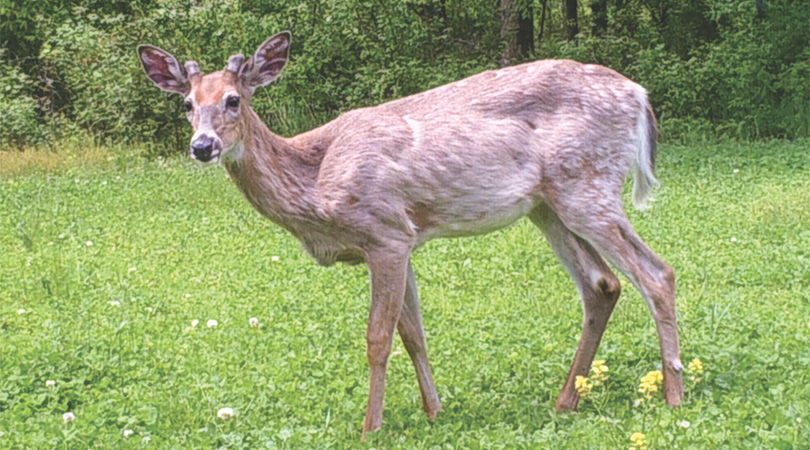While there are a lot of factors that can affect a buck’s antler growth and general physical condition, social stress might be at the top of the list.
When considering those factors that can have a negative effect on the physical well-being of the deer on your hunting property, most often it’s those limiting influences such as hunting pressure, disease, poor cover and lack resources, such as food and water, that get the most attention. But is it possible that social interactions within the herd can also be a significant stressor and even affect antler growth in bucks?
Environmental stressors, such as temperature and precipitation, for example, have been studied to show their effects on a buck’s body weight and antler size. In Texas, years of ample rainfall can cause 10 percent or greater antler growth. And in Northern states, mild winters typically lead to increased body weight the following fall.
Social Anxiety
But what about social stress? Stress levels in deer can be detected by testing fecal samples — yes, deer poop. The samples contain levels of glucocorticoids, which are a measurement of stress in individual deer. So it is possible to determine if stress is higher in areas with higher deer densities. But is it possible to determine if higher stress levels affect the quality of bucks in a given area?

Because environmental and social stressors cross over so much, the short answer is no. However, logically speaking, if there are more deer in an area, there will more stress in the form of competition for available resources. And during the rut, instead of an intense two-week period of chasing and breeding, a high deer density area might have a significant number of “missed” does, which could potentially extend the breeding season, putting more wear and tear on bucks. With fat reserves depleted, they enter a scarce food period (winter) in an already weakened condition.
What about areas where there are a lot of bucks? Not every mature buck is going to be a giant antlered deer, but they will often still dominate high-quality young bucks. Some call these deer “bully bucks,” but regardless it puts more stress on those young deer. But does that suppress those bucks’ ability to reach their maximum body and antler potential? Possibly.
If we consider humans for a second, we know that stress can wear on the mind and body, eventually causing illness or other issues. There is no reason to think that it’s any different in deer. So what can be done?
A Balanced Herd is Key
The importance of keeping deer numbers in balance with the available habitat and its resources cannot be overstated. On a lot of properties, deer managers supplement with feeding stations and food plots. It’s not uncommon for me to hear, “I have plenty of food for that many deer,” which might be true. However, those deer also need space, and will have more interactions at higher densities, so food isn’t the only factor to consider.
That’s not to say that with the right resources your property cannot support high deer numbers, but it’s important to balance your expectations and understand that a higher quantity of deer might not translate to higher quality deer.

